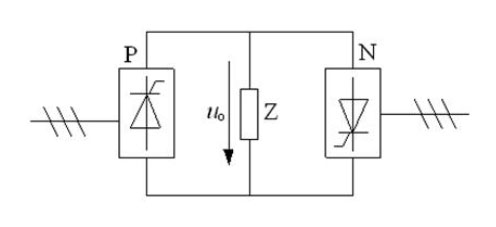There are many differences between a power inverter and a frequency inverter. Power inverters and frequency inverters serve different purposes and operate differently. The detailed analysis of the power inverter and frequency inverter is as follows.
What is a power inverter?
A power inverter is a device that can convert DC (the battery and accumulator jar) into AC (normally the sinusoidal wave of 220V and 50Hz). It is composed of an inverter bridge, control logic, and filter circuit. It is a voltage inversion process with the adapter. The adapter converts the AC voltage of the mains power grid into a stable 12V DC output, while the inverter converts the 12V DC voltage output by the adapter into high-frequency high-voltage AC. Now, the inverters generally use PWM pulse width modulation technology to obtain high-power, high-efficiency AC inverter output.
With a power inverter, direct current (battery, switching power supply, fuel cell, etc.) can be converted into alternating current to provide stable and reliable power protection for electrical appliances, such as laptops, mobile phones, handheld PCs, digital cameras, and various instruments. Inverters can also be used with generators, which can effectively save fuel and reduce noise. The power inverter has a wide range of uses. It can be used in various vehicles, such as automobiles, ships, and aircraft. In the field of solar and wind power generation, inverters play an irreplaceable role. It is also widely used in air conditioners, home cinemas, electric grinding wheels, electric tools, sewing machines, DVDs, VCDs, computers, TVs, washing machines, cooker hoods, refrigerators, video recorders, massage devices, fans, and lighting devices.
What is a frequency inverter?
A frequency inverter, also named VFD, is a kind of power control equipment adopting frequency conversion technology and microelectronics technology to control AC motors by changing the motor power frequency. The frequency inverter is mainly composed of a rectifier (from AC to DC), filter, inverter (from DC to AC), braking unit, driving unit, detecting unit processing unit, etc. The frequency converter can adjust the output power’s voltage and frequency by controlling the on and off of the IGBT. It can provide the required power voltage according to the motor demands to achieve the purpose of energy saving and speed regulation. In addition, the frequency inverter can also provide various protection functions, including over-current protection, over-voltage protection, overload protection, etc. With the improvement of industrial automation degree, now the frequency inverter has been widely applied.

The above figure shows the circuit with AC frequency. P and N refer to the converter circuit. The AC can be set into DC and can be loaded to Z. When the pulse signal sent to P is sinusoidal, the set DC is sinusoidal and it is the upper half part of the sinusoidal curve. At the same time, the period is also the sinusoidal period of the pulse signal, which is an integral multiple of the AC period. The periodic sinusoidal current is generated on the load Z under the co-working of P and N. In addition, the frequency can be adjusted according to the pulse signal period. This is the working principle of the frequency inverter.
The difference between power inverter and frequency inverter
Power inverter
The power inverter is a device that can convert DC into AC. The power inverter is commonly used to power AC devices from a DC source, such as a car battery or solar panels. The power inverter can convert DC power (battery, accumulator jar) into AC power (sinusoidal wave of 220V and 50 Hz), and the frequency can also be adjusted.
The work principles include AC-DC-AC or AC-AC. The common rule is AC-DC-AC, based on which the AC is converted into DC first, and then the DC is converted into AC. This is also the process of rectifying and inverting.
Applications: solar power systems, backup power supplies, mobile power sources (e.g., in vehicles or boats).
Frequency inverter
The frequency inverter includes the frequency adjustment part. However, the inverter only has a fixed output frequency. The frequency inverter is a component used to change the AC frequency. The frequency inverter can convert the input AC into the AC with the required frequency and then output it.
Types:
- Scalar (V/f) control: The simplest type, controlling the voltage and frequency in a fixed ratio.
- Vector control: Provides more precise motor control by adjusting the voltage, frequency, and current phase angle.
Frequency conversion (e.g., 50 Hz or 60 Hz to a range of 0 to 400 Hz).
Allows for precise motor control, leading to energy savings and improved process control.
Often includes additional features like motor protection, feedback systems, and programmable logic controls.
Applications: Industrial motor speed control, HVAC systems, conveyor systems, pump and fan speed control.
Conclusion
Power inverter: Converts DC to AC, typically without changing the frequency. Used for providing AC power from DC sources.
Frequency inverter: Converts AC to AC with variable frequency and voltage, used primarily for controlling AC motor speeds.
